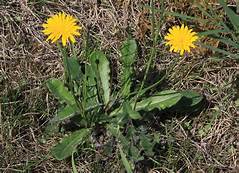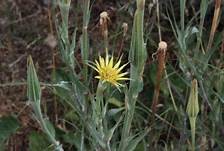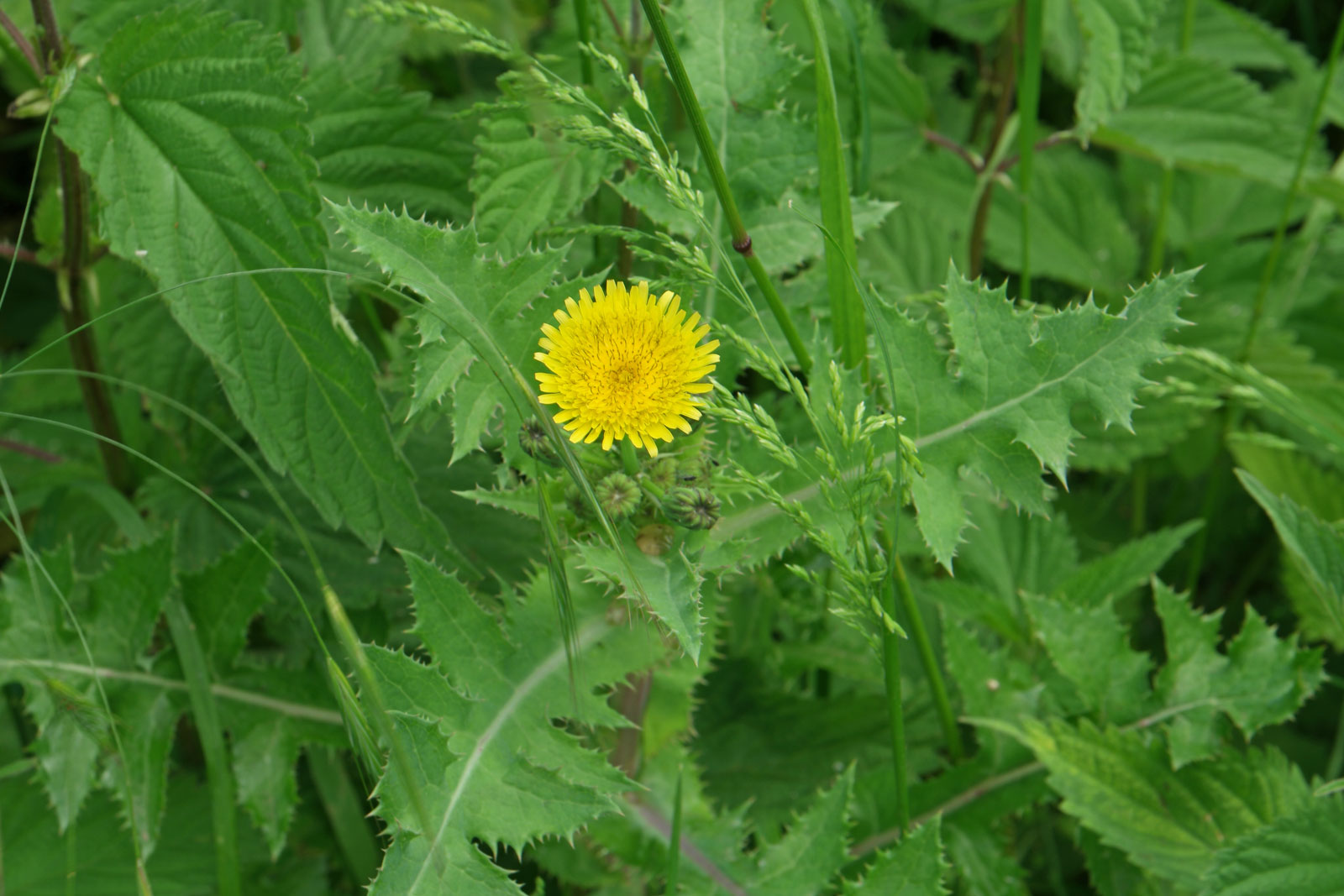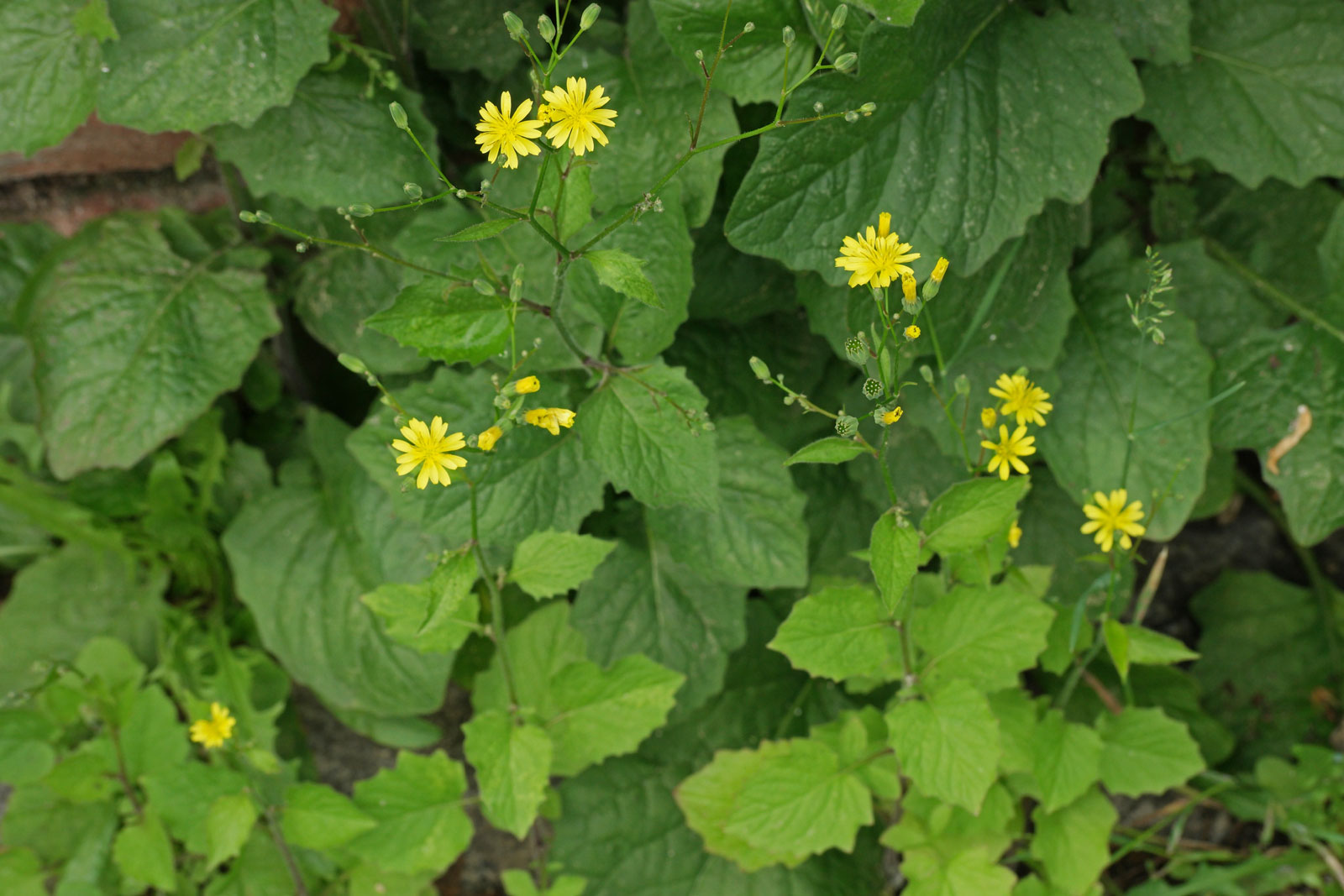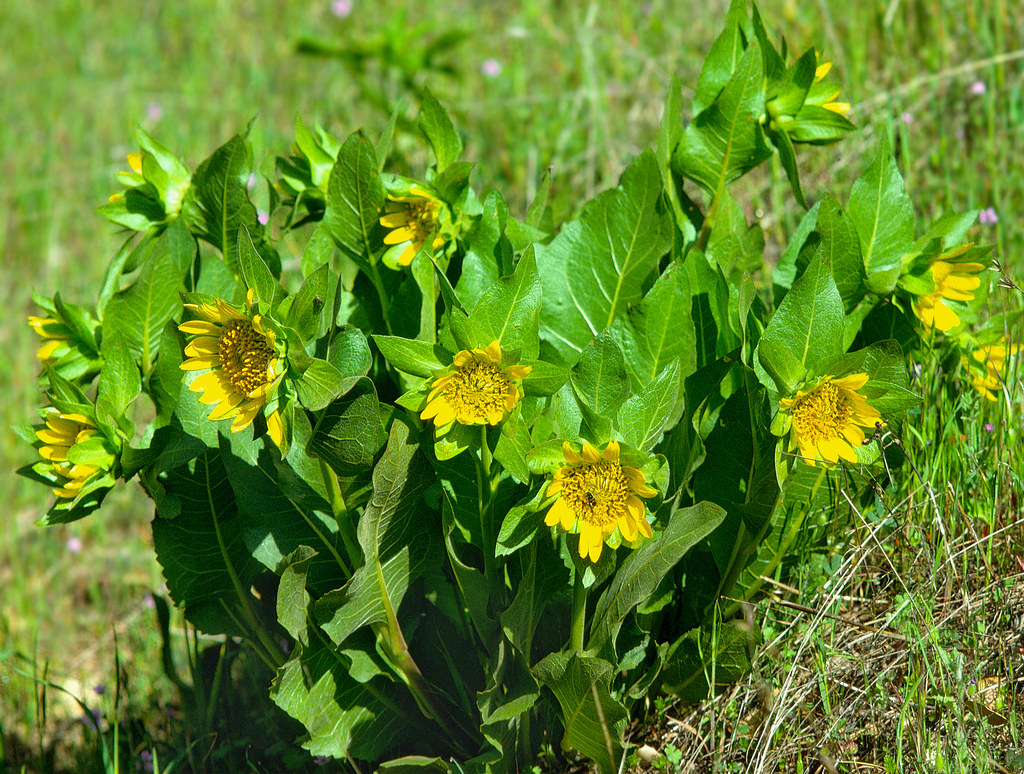Introduced Species: Dandelions (Taraxacum officinale), and some bonus species (So. Much. Yellow!)
Description: Why take the time to write about dandelions? Everyone knows them, right? Well, no; in fact, dandelions are a hugely confusing topic in botany, and–hang onto your hat–there are actually *native* dandelions in the western US (such as T. officinale ssp. ceratophorum; in some taxonomies, it is considered a separate species, Taraxacum ceratophorum). There are also a number of similar-looking, similarly weedy plants in the same family (Asteraceae), just to add to the fun. Let’s take a few moments to explore dandelions, and other yellow-flowered weeds in the lawn that may be confused with them:
Hairy cat’s ear (Hypochaeris radicata), aka false dandelion, is a taprooted perennial with hairy leaves (vs dandelion leaves, which are hairless), and a solid, branched flower stalk (vs. the unbranched, hollow stalk of dandelions).
Yellow salsify (Tragopodon dubius) has greyish, narrow leaves (vs dandelion’s wider green ones), and a much broader flower and larger seed head than dandelion (it’s like a regular dandelion ate a Super Mario mushroom). It is an annual (or, occasionally, biennial).
Prickly sow-thistle (Sonchus asper) is a quite tall annual (up to 2 m = 6 ft), with sharp spines on the margins and undersides of bluish-green leaves that occur all the way up the flower stalk.
Nipplewort (Lapsana communis) has hairy, branching stems with clear sap (vs milky sap from dandelions), and has both basal and stem leaves. It may be an annual or perennial.
Dandelion leaves are exclusively basal, as are those of hairy cat’s ear and salsify; however, unlike these look-alikes, dandelion leaves are deeply and sharply lobed (sometimes all the way to the midvein); the name “dandelion” actually derives from the “lion’s teeth” appearance of these lobes. Dandelion leaves vary in length from 5- 45 cm (2-18 in). The flower heads of all of these–which appear at first glance as individual flowers–are clusters of florets (each “petal” is, in fact, a separate flower); dandelions bear a single flower head on each stalk (vs. branched stalks with multiple heads on all the look-alikes except salsify), which is typically less than 2.5 cm (1 in) across (vs. salsify’s flower head, which measures 4-6 cm = roughly 2 in).
As mentioned above, taxonomy within the Taraxacum genus is complicated, and not entirely agreed upon; some argue that native dandelions are a sub-species, while others consider them separate species. Native dandelions are generally limited in range to alpine or sub-alpine regions, so what you have in your yard is almost certainly one of the European varieties.
All this confusion notwithstanding, these plants have one thing in common besides their appearance: they’re all edible! Some require cooking (sow thistle, in particular, would be an exceedingly unpleasant experience raw–ouch!), and dandelions, while bitter, are probably the most palatable of the bunch–but crossing up dandelion with a hairy cat’s ear isn’t going to do anything to you. (NOTE: always triple-check your identification before consuming any non-cultivated plant, and eat only a small amount at first. Also, this is not meant to be an exhaustive list of yellow-flowered weeds, so know what you have before you try it.)
Spread: All of these species spread predominantly through their ample seed production; with the exception of nipplewort, seeds of these plants are all attached to a pappus–the feathery appendage that allows seeds to float away on the wind, or the puff of air you’ve just directed at them. A single dandelion plant can produce more than 5000 seeds in a year, which disperse widely and readily colonize disturbed areas.
Control: Manual digging/pulling of any of these weeds is straightforward and effective on small or scattered populations (this may be aided by a “dandelion puller,” a modified, hooked trowel meant to leverage the deep taproot out, which is important to prevent regrowth). Filling in the gap left where the plant was will help to prevent new seed from recolonizing the spot.
Native replacement: If dandelions are growing in the middle of a lawn, you’re probably just looking to get the lawn to fill in! For dandelions in a garden bed, an attractive native replacement with a yellow flower is mule’s ears (Wyethia angustifolia), a drought-tolerant perennial found in meadows throughout the Pacific northwest coast.

